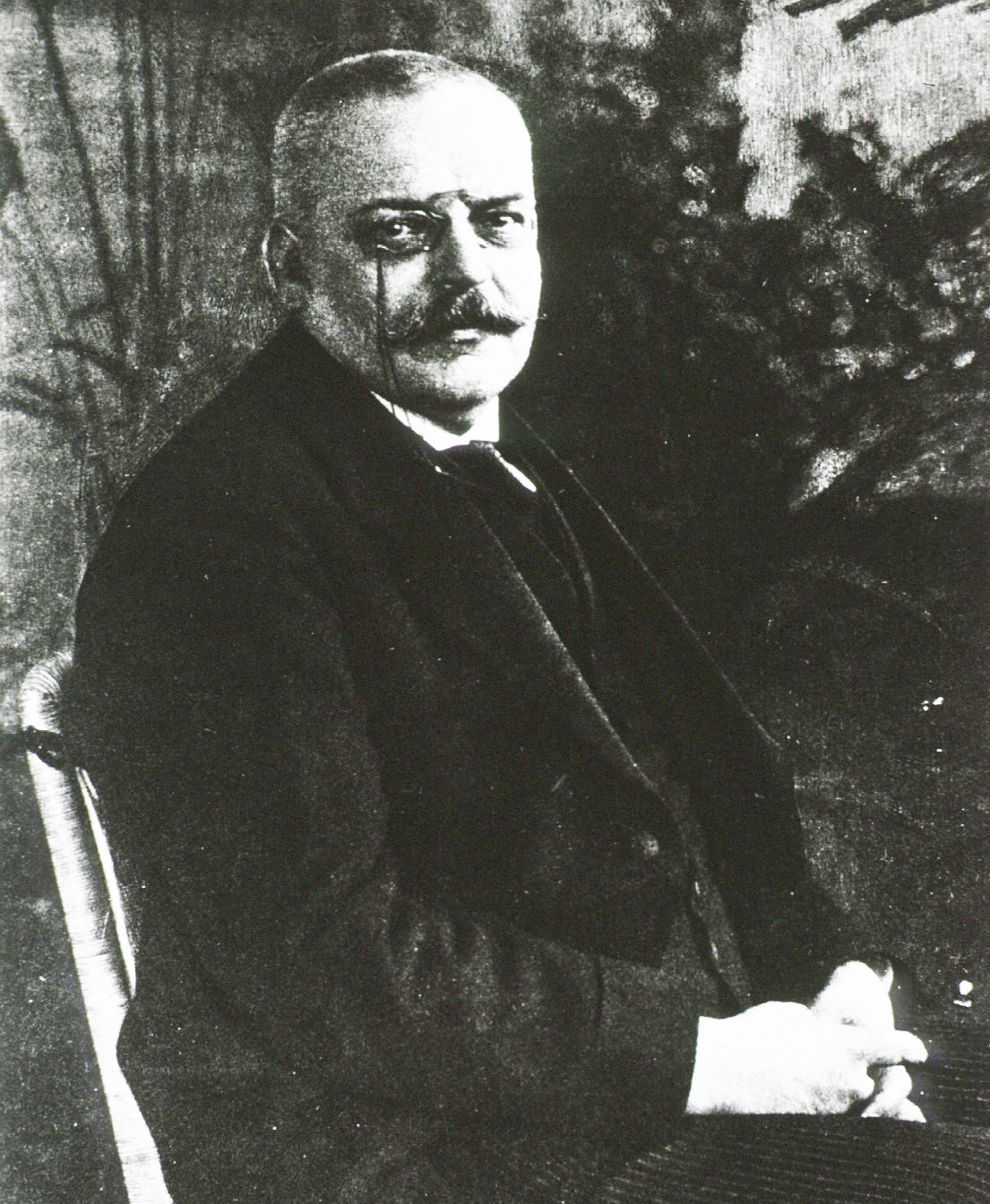 |
| Dr Alois Alzheimer (1864–1915) |
It is my wish to disembark from a time machine in Tubingen, Germany, on 3 November 1906 and attend the conference where Dr Alois Alzheimer (1864–1915), a clinical psychiatrist and neuroanatomist, presented a brief paper on his microscopic findings in “a peculiar severe disease process of the cerebral cortex” of a 55-year-old woman who had died a few months before.
Dr Alzheimer presented his findings to some 88 prominent psychiatrists from across Europe. Mrs Auguste Deter, the subject of the presentation, had been admitted to the Institution for Mentally Ill and Epileptics in Frankfurt in 1901. Her husband, railroad worker Karl Deter, could not look after her at home anymore. At the time Dr Alzheimer worked at the institution as a clinical psychiatrist responsible for patients, but he also maintained an interest in anatomy and histology. Dr Alzheimer’s medical record of Mrs Deter’s admission history was discovered in 1996. Over the course of asking many questions, Dr Alzheimer asked her to “Write a five.” She wrote, “A woman.” “Write an eight,” he asked. She wrote, “Auguste,” while repeatedly saying, “I have lost myself, so to say.”
Shortly after Mrs Deter’s hospitalization Dr Alzheimer moved to Munich to supervise completion of a new hospital, which included a spacious and modern histopathological laboratory. He frequently called his colleagues in Frankfurt inquiring about Mrs Deter’s condition. In 1906 Mrs Deter died of sepsis caused by bedsores. Her medical records indicated severe deterioration of her condition. At Dr Alzheimer’s request, her brain was sent to him for further study, which led to his microscopic findings and to the unheralded presentation in Tubingen. His paper was published a year after that conference and it received the very strong support of his mentor, Dr Emil Kraepelin (1856–1922), one of Germany’s leading psychiatrists of the time.
Three years later, in 1910, Kraepelin published his influential Handbook of Psychiatry in which he included Dr Alzheimer’s description of Mrs Deter’s dementia with the specific histological findings. Dr Kraepelin introduced the diagnostic term “Alzheimer’s disease.”
In 1912 Dr Alzheimer was appointed the chair of psychiatry at the University of Breslau. He worked as clinician and director of the psychiatric hospital. His friends knew him as a dedicated professor and habitual cigar smoker. He was married and had three children. His wife died a few months after the birth of their third child. Soon after taking up his much-anticipated position in Breslau he became ill, probably suffering from rheumatic fever leading to valvular heart disease, heart failure, and kidney failure. Dr Alzheimer died in 1915 at the age of 51.
I wish I could have known him.
—George Szasz, CM, MD
Suggested reading
Auguste Deter. Wikipedia. Accessed 12 March 2019. https://en.wikiipedia.org/wiki/Auguste_Deter.
Cipriani G, Danti S, Carlesi C. Three men in a (same) boat: Alzheimer, Pick, Lewy. Historical notes. European Geriatric Med 2016;7:526-530.
Hippius H, Neundorfer G. The discovery of Alzheimer’s disease. Dialogues Clin Neurosci 2003;5:101-108.
Toodayan N. Professor Alois Alzheimer (1864-1915): Lest we forget. J Clin Neurosci 2016;31:47-55.
This post has not been peer reviewed by the BCMJ Editorial Board.


